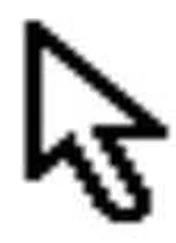Andy Pike - DirectX 8 Programming Tutorial
Здесь есть возможность читать онлайн «Andy Pike - DirectX 8 Programming Tutorial» весь текст электронной книги совершенно бесплатно (целиком полную версию без сокращений). В некоторых случаях можно слушать аудио, скачать через торрент в формате fb2 и присутствует краткое содержание. Жанр: Программирование, на английском языке. Описание произведения, (предисловие) а так же отзывы посетителей доступны на портале библиотеки ЛибКат.
- Название:DirectX 8 Programming Tutorial
- Автор:
- Жанр:
- Год:неизвестен
- ISBN:нет данных
- Рейтинг книги:5 / 5. Голосов: 1
-
Избранное:Добавить в избранное
- Отзывы:
-
Ваша оценка:
- 100
- 1
- 2
- 3
- 4
- 5
DirectX 8 Programming Tutorial: краткое содержание, описание и аннотация
Предлагаем к чтению аннотацию, описание, краткое содержание или предисловие (зависит от того, что написал сам автор книги «DirectX 8 Programming Tutorial»). Если вы не нашли необходимую информацию о книге — напишите в комментариях, мы постараемся отыскать её.
DirectX 8 Programming Tutorial — читать онлайн бесплатно полную книгу (весь текст) целиком
Ниже представлен текст книги, разбитый по страницам. Система сохранения места последней прочитанной страницы, позволяет с удобством читать онлайн бесплатно книгу «DirectX 8 Programming Tutorial», без необходимости каждый раз заново искать на чём Вы остановились. Поставьте закладку, и сможете в любой момент перейти на страницу, на которой закончили чтение.
Интервал:
Закладка:
//will now be visible on screen (front buffer).
g_pD3DDevice->Present(NULL, NULL, NULL, NULL);
}
void CleanUp() {
if (g_pD3DDevice != NULL) {
g_pD3DDevice->Release();
g_pD3DDevice = NULL;
}
if (g_pD3D != NULL) {
g_pD3D->Release();
g_pD3D = NULL;
}
}
void GameLoop() {
//Enter the game loop
MSG msg;
BOOL fMessage;
PeekMessage(&msg, NULL, 0U, 0U, PM_NOREMOVE);
while (msg.message != WM_QUIT) {
fMessage = PeekMessage(&msg, NULL, 0U, 0U, PM_REMOVE);
if (fMessage) {
//Process message
TranslateMessage(&msg);
DispatchMessage(&msg);
} else {
//No message to process, so render the current scene
Render();
}
}
}
//The windows message handler
LRESULT WINAPI WinProc(HWND hWnd, UINT msg, WPARAM wParam, LPARAM lParam) {
switch(msg) {
case WM_DESTROY:
PostQuitMessage(0);
return 0;
break;
case WM_KEYUP:
switch (wParam) {
case VK_ESCAPE:
//User has pressed the escape key, so quit
DestroyWindow(hWnd);
return 0;
break;
}
break;
}
return DefWindowProc(hWnd, msg, wParam, lParam);
}
//Application entry point
INT WINAPI WinMain(HINSTANCE hInst, HINSTANCE, LPSTR, INT) {
//Register the window class
WNDCLASSEX wc = {
sizeof(WNDCLASSEX), CS_CLASSDC, WinProc, 0L, 0L, GetModuleHandle(NULL), NULL, NULL, NULL, NULL, "DX Project 1", NULL
};
RegisterClassEx(&wc);
//Create the application's window
HWND hWnd = CreateWindow("DX Project 1", www.andypike.com: Tutorial 1, WS_OVERLAPPEDWINDOW, 50, 50, 500, 500, GetDesktopWindow(), NULL, wc.hInstance, NULL);
//Initialize Direct3D
if (SUCCEEDED(InitialiseD3D(hWnd))) {
//Show our window
ShowWindow(hWnd, SW_SHOWDEFAULT);
UpdateWindow(hWnd);
//Start game running: Enter the game loop
GameLoop();
}
CleanUp();
UnregisterClass("DX Project 1", wc.hInstance);
return 0;
}
You should finish up with a window with a green background (shown below). Okay, it Їs not much I know, but everyone has to start somewhere.
So, what is going on here?
WinMain
This is the applications entry point. Code execution will start here. This is where we register, create and show our window. Once that is complete, we initialise Direct3D and enter our game loop.
WinProc
This is the applications message handler. Whenever Windows sends a message to our application, it will be handled by this function. Notice that there are two messages that our application will handle: WM_DESTROY and WM_KEYUP, all other messages are passed to DefWindowProc for default message processing.
g_pD3D
This is a pointer to an IDirect3D8 interface. From this interface we will create our Direct3D Device.
g_pD3DDevice
This is a pointer to an IDirect3DDevice8 interface. This will actually represent your hardware graphics card.
InitialiseD3D
This does exactly that: initialise Direct3D. First of all, we create the IDirect3D8 object. From this object we can determine the users current display mode. Finally, we use this information to create a compatible device.
GameLoop
Once our window is created this function is called. This function contains the main game loop. If there are no windows messages to handle, it calls our Render() function.
Render
Firstly we clear the back buffer ready for drawing. Then we use the BeginScene method of our device object to tell DirectX that we are about to start drawing. We can then start to draw our game objects ( Tutorial 2). Once we have finished drawing, we use the EndScene method of our device object to tell DirectX that we have finished drawing. The final step is to "flip" (present) the back buffer, this will display our game objects to the user.
CleanUp
Simply cleans up by releasing our objects.
Ok, that Їt the most spectacular thing in the world, but just wait for the next tutorial when we will be drawing some shapes!
DirectX Tutorial 2: Drawing a Polygon
This tutorial builds on the topics and code from the previous tutorial. Make sure you have read Tutorial 1 before you continue.
All 3D shapes are made up from a number of polygons, normally triangles. Triangles are used because they are the most efficient polygons to draw. So, if you wanted to draw a square, it is more efficient to draw two triangles next to each other rather than one square. Therefore, this tutorial will show you how to create one of the building blocks of 3D graphics: a triangular polygon.
What is a vertex? Vertices are points in 3D space. For example, a triangle has three vertices and a square has four vertices. You can describe a triangle by specifying where its three vertices are. To do this you need to know about coordinates.
Below are two diagrams showing how the 2D Cartesian coordinate system works.
In the examples above, we have an x-axis and a y-axis. Along each of these axis are numbers starting from zero (at the origin) and increasing the further along the axis you go. So, to specify a single point, all you need is an x value and a y value (see fig 2.1). It follows then, to represent a triangle you need three of these points that are joined together, each with an x value and a y value (fig 2.2). Notice that when we write a coordinate, it is always in the form: (x, y).
Below are two diagrams showing how the left-handed 3D Cartesian coordinate system works.
Fig 2.3
Fig 2.4
As with the 2D coordinate system we have an x-axis and a y-axis. When we are dealing with 3D shapes and points we need an extra dimension – the z-axis. This axis works in the same way with numbers starting from zero at the origin and increasing the further along the axis you go. Now, with these three axis we can specify any point in 3D space. Notice that when we write coordinates in 3D space they are always in the form: (x, y, z).
What is a 3D primitive? Well, a 3D primitive is a collection of vertices that make up a 3D shape. There are six 3D primitives in Direct3D, you will use these primitives to draw your 3D shapes. Below are diagrams showing examples of these primitives:
Point Lists
A Flexible Vertex Format or FVF is a format for describing attributes of a vertex. We've already seen three attributes: x value, y value and z value. There are other attributes that we can specify for a vertex, such as, colour and shininess. Using FVFs we can configure which attributes we want specify for a vertex. When you specify a polygon in Direct3D, the polygon can be filled based on attributes of the vertices. The fill of the polygon is interpolated (blended) between vertices. In our example below, you will see that the three vertices of our polygon are all different colours: red, green and blue. These colours are blended together across the polygon.
Читать дальшеИнтервал:
Закладка:
Похожие книги на «DirectX 8 Programming Tutorial»
Представляем Вашему вниманию похожие книги на «DirectX 8 Programming Tutorial» списком для выбора. Мы отобрали схожую по названию и смыслу литературу в надежде предоставить читателям больше вариантов отыскать новые, интересные, ещё непрочитанные произведения.
Обсуждение, отзывы о книге «DirectX 8 Programming Tutorial» и просто собственные мнения читателей. Оставьте ваши комментарии, напишите, что Вы думаете о произведении, его смысле или главных героях. Укажите что конкретно понравилось, а что нет, и почему Вы так считаете.









